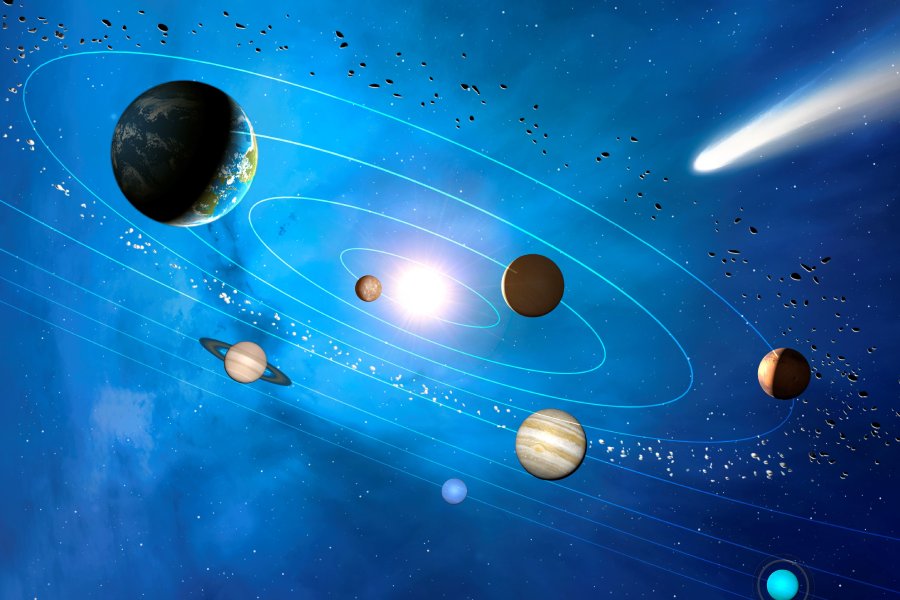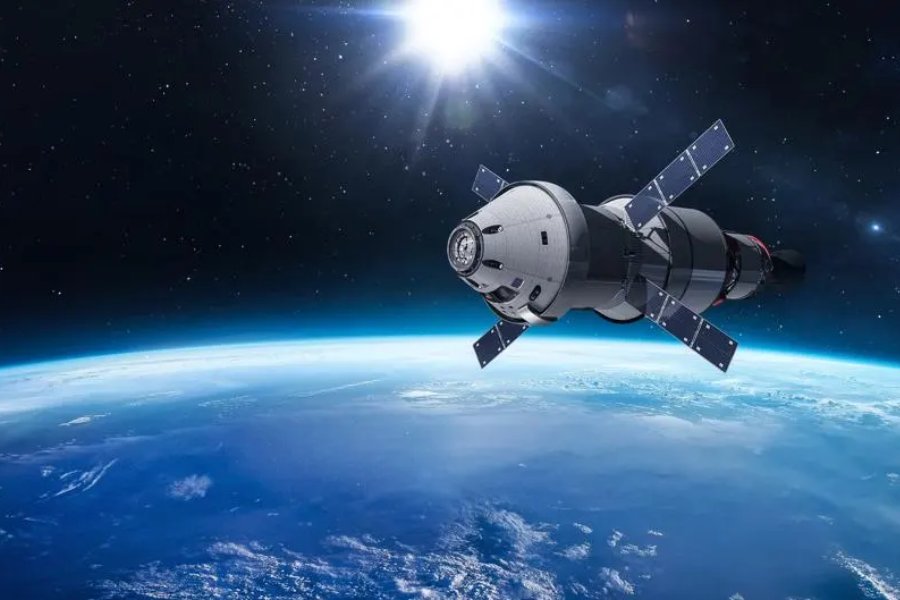The night sky dazzles with a sea of stars. With each passing moment, astronomers and researchers push the boundaries of knowledge, unveiling the secrets of distant worlds and unraveling the mysteries of celestial creation. We already know the number of celestial bodies in our Solar System, but how many planets are in the universe?
In this article, we’ll delve into our current understanding of the planetary population within our galaxy and the vast reaches of the universe. We’ll explore the intricacies of planet formation and the advanced techniques utilized to detect exoplanets situated lightyears away.
Drawing upon the latest insights, we will present estimates for the potential number of planets, contemplating the notion of an astonishingly high count of worlds scattered throughout the incomprehensible expanse of space.

The Definition of a Planet
The current definition of a planet, established by the International Astronomical Union (IAU) in 2006, classifies a celestial body as a planet if it orbits the Sun, is spherical in shape, and has cleared its orbital path of other debris. This definition led to the reclassification of Pluto as a “dwarf planet” due to its failure to meet the criterion of clearing its orbit.
The importance of this definition lies in its role as a scientific guideline for categorizing celestial bodies within our Solar System. It provides a standardized framework for identifying and understanding different classes of objects, aiding astronomers in their research.
Clear criteria for planetary status help maintain consistency in scientific communication and classification, allowing for a more systematic exploration of our Solar System. By defining what constitutes a planet, the IAU’s criteria contribute to the precision and clarity of astronomical discussions and research.
How Many Planets Are in the Universe?
The exact number of planets in the universe is unknown, but estimates suggest there could be billions in our galaxy alone and trillions across the observable universe. Ongoing technological advancements contribute to the discovery of new planets beyond our Solar System.
Our Solar System consists of eight primary planets. The four terrestrial planets closer to the Sun are Mercury, Venus, Earth, and Mars. These rocky planets share common characteristics, such as solid surfaces and relatively smaller sizes.
Beyond the terrestrial planets lie the gas giants—Jupiter and Saturn. These massive planets primarily comprise hydrogen and helium, with no solid surfaces. Jupiter, the largest planet in our Solar System, boasts a powerful magnetic field and a multitude of moons. Saturn, renowned for its prominent ring system, is the second-largest gas giant.
The ice giants Uranus and Neptune also inhabit the Solar System’s outer reaches. These planets possess thick atmospheres and icy compositions. Pluto, once considered the ninth planet, is now categorized as a dwarf planet due to redefined planetary criteria by the International Astronomical Union (IAU). Despite its reclassification, Pluto remains a fascinating celestial body within our diverse Solar System.
Rogue planets
Rogue planets, untethered by any star, drift through the cosmos without orbiting a parent sun. These cosmic nomads, ejected from their original star systems, roam the interstellar void in solitary splendor.
Lacking the warmth of a star, they navigate the dark expanses, their existence illuminated solely by reflected starlight or residual internal heat. These solitary wanderers challenge our conventional understanding of planetary systems and offer a unique glimpse into the diverse formations present in the cosmos.
The largest and smallest known exoplanets
In the vast expanse of our galaxy, exoplanets span a wide range of sizes. The largest known exoplanet, often dubbed a “Hot Jupiter”, is a colossal gas giant several times more massive than Jupiter, orbiting perilously close to its host star.
On the opposite end of the scale, we find diminutive exoplanets, such as super-Earths or even smaller rocky bodies. With their varying compositions and sizes, these planetary extremes broaden our understanding of planetary diversity beyond our Solar System.
Ongoing Discoveries: The Role of Space Missions
Cosmic pioneers
Space missions have greatly expanded our exoplanet knowledge. The pioneering Kepler mission was pivotal in this endeavor, confirming thousands of new worlds.
TESS is building on this legacy by searching for planets orbiting nearby stars while additional observations pour in from Hubble, Spitzer, and a suite of ground telescopes.
Each instrument contributes unique data, and space further enables new detection methods. For example, microlensing leverages precise stellar alignments to uncover small, distant worlds. By gathering pristine data beyond Earth’s distorting atmosphere, space missions unveil exotic exoplanets invisible to terrestrial tools.

Upcoming endeavors
In the coming years, upcoming missions will unlock discoveries. PLATO, for instance, is set to embark on a mission to identify rocky, potentially habitable planets. Meanwhile, ARIEL will focus on analyzing the atmospheres of exoplanets, providing crucial insights into their composition and potential habitability.
Additionally, WFIRST boasts advanced technology capable of directly imaging exoplanets, offering unprecedented views of these distant worlds. Together, these missions promise to shed light on many exoplanetary properties, uncovering new insights, abundant data, and perhaps even new mysteries waiting to be solved.
The Search for Extraterrestrial Life
Life beyond Earth
Finding life beyond Earth would be revolutionary. The ingredients for life—water, organic compounds and energy sources—are now known to converge on exoplanets commonly. But despite these planetary cradles existing widely, we have scarce understanding of how frequently sparkings of genesis occur.
The search continues amongst the swelling ranks of alien worlds for the subtle chemical signs of life’s emergence. So, how many habitable planets are there in the universe?
The number of habitable planets in the universe remains unknown. The search for habitable planets is ongoing, and scientists have identified several potentially suitable candidates, but a definitive count is currently unavailable.
Goldilocks zone
The size and location of a planet are crucial factors for supporting life. Rocky planets situated in the habitable zone, also known as the “Goldilocks zone”, have the right conditions to maintain liquid water—a key ingredient for life as we know it. This zone strikes a perfect balance, neither too hot nor too cold, making it conducive for life to thrive.
In the quest for discovering life beyond Earth, upcoming missions will focus on exploring temperate, rocky planets within this Goldilocks zone. The likelihood of finding life elsewhere in the universe may seem statistically rare. However, the possibilities remain open given the vast number of planets—billions upon billions.
The Limitations of Observation
Unseen realms
Our planet census is still incomplete because many planets are undetectable. Small, distant worlds are too faint to be observed, and planets can be obscured by the glare of nearby stars, making entire solar systems likely to escape notice.
Planets in other galaxies are invisible to us, as other galaxies exist millions of lightyears distant, with their stars appearing as faint pinpricks. Detecting their small planets exceeds modern limits.
There are also detection biases, as certain planet types are easier to spot, favoring large worlds orbiting close to stars. Thus, many smaller planets likely remain hidden from current methods.
Technological horizon
Enhanced telescopes promise to uncover more worlds beyond our own. Telescopes positioned in space circumvent the atmospheric distortions of Earth, offering clearer views.
Upcoming innovations such as LUVOIR might capture images of distant exoplanets directly. Moreover, advancements in techniques aim to minimize light interference, further refining our observations.
The surge in computational capabilities also plays a pivotal role, enabling scientists to sift through vast datasets and detect subtle patterns that may indicate the presence of previously unseen planets. As technology advances, it expands our ability to perceive the universe in greater detail.
Conclusion
The cosmic census of planets is continually growing as we explore realms beyond our Solar System. Thousands of exoplanets have been discovered, yet billions more likely await detection. So, how many planets are in the universe?
Though we may never know the exact number, the quest to understand the planetary population of the universe drives forward our knowledge. As planet-hunting technology improves, a clearer cosmic portrait will emerge. But for now, we can appreciate that untold worlds orbit distant stars, inviting imagination about what might exist in the farthest corners of our wondrous universe.
While we may never know the exact count, the incredible search for alien planets gives us perspective on our place in the cosmos. The fascinating quest continues to reveal the wonders of our galaxy and spark imagination about what might exist in the farthest reaches of space.
